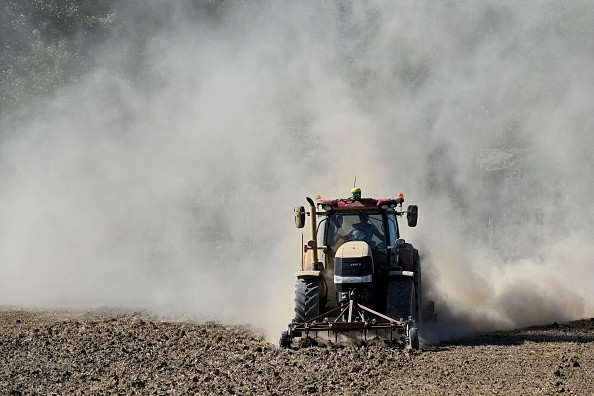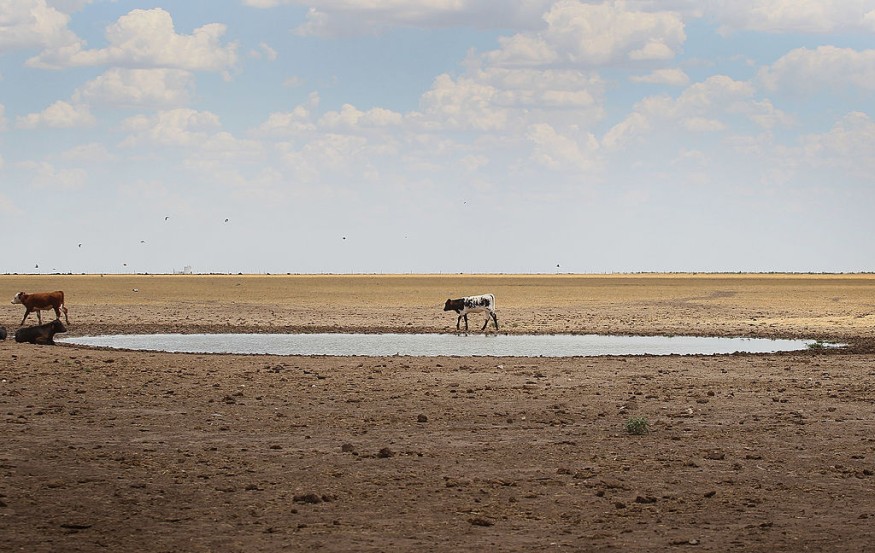Over three quarters of U.S. farmers say this year's drought harms their harvest. The effects of the drought this year are more severe than last year.
About 37% of farmers destroyed and killed current crops that won't mature due to the dry weather. According to the report, this is an increase from 24% last year.

Intense Heat
July was the third-hottest month on record for the U.S. Nearly 60% of the West, South, and Central Plains reportedly suffered from extreme drought.
Unfortunate Choice

Many farmers have been forced to make the heartbreaking choice to sell off livestock; they have spent years raising or destroying orchard trees that have grown for decades, according to Zippy Duvall, president of the AFBF. "The effects of this drought will be felt for years to come, not just by farmers and ranchers but also by consumers," he added.
50% of farmers in California say they have had to cut or replant trees because of the drought. 33% of all U.S. farmers indicated they had to make the adjustments due to the drought, a poll by the American Farm Bureau Federation (AFBF) has found.
Heat and Drought
Texas is experiencing an unprecedented drought, forcing farmers to sell their cow herds sooner than usual as water supplies dry up and grass burns up. Farmers in the Lone Star state reported a 50% decrease in herd size, followed by reductions of 43% and 41% in New Mexico and Oregon, respectively.
Since 2011, when we experienced our most recent severe drought, we haven't seen this type of migration of cows to markets, according to Texas A&M professor of agricultural economics David Anderson, who spoke with CNN last month.
This year, farmers and ranchers have focused heavily on livestock access to water, with 57% reporting local water usage limitations, up from 50% last year. According to the AFBF, primary water sources like Lake Mead and Lake Powell, operating at less than 30% of their maximum capacity, usually supply water to 5.5 million acres of land across seven western states.
The federal authorities stated that the Colorado River would run for the first time under a Tier 2 scarcity situation beginning in January. As a result, Arizona, Nevada, and Mexico will need less water from the Colorado River.
Price Increase

U.S. consumers may anticipate spending extra on several food items due to the drought. Ranchers find it more difficult to recover their land when inflation is high. Although diesel prices are down, they are still high, making them substantially more expensive than in previous years.
According to Daniel Munch, an economist with the American Farm Bureau Federation, "for cattle and beef, once the market processes the excess animals sent to slaughter and has a smaller breeding herd to operate off of- [price increases] could be six months to well over a year." However, he added, "for specialty crops, it could be immediately upon harvest."
Research claims that most fruits and nuts consumed in the U.S. originate from states experiencing severe drought. Farmers were forced to abandon planting or remove orchards. Consumers will have to rely on foreign suppliers or decrease the range of items they buy at the shop.
According to the August inflation data from the Bureau of Labor Statistics, U.S. consumers are paying 9.3% more on fruits and vegetables than a year ago.
Related Article : French Farmer Uses Sustainable Crop to Defy Drought
For more climate and weather updates, don't forget to follow Nature World News!
© 2026 NatureWorldNews.com All rights reserved. Do not reproduce without permission.





